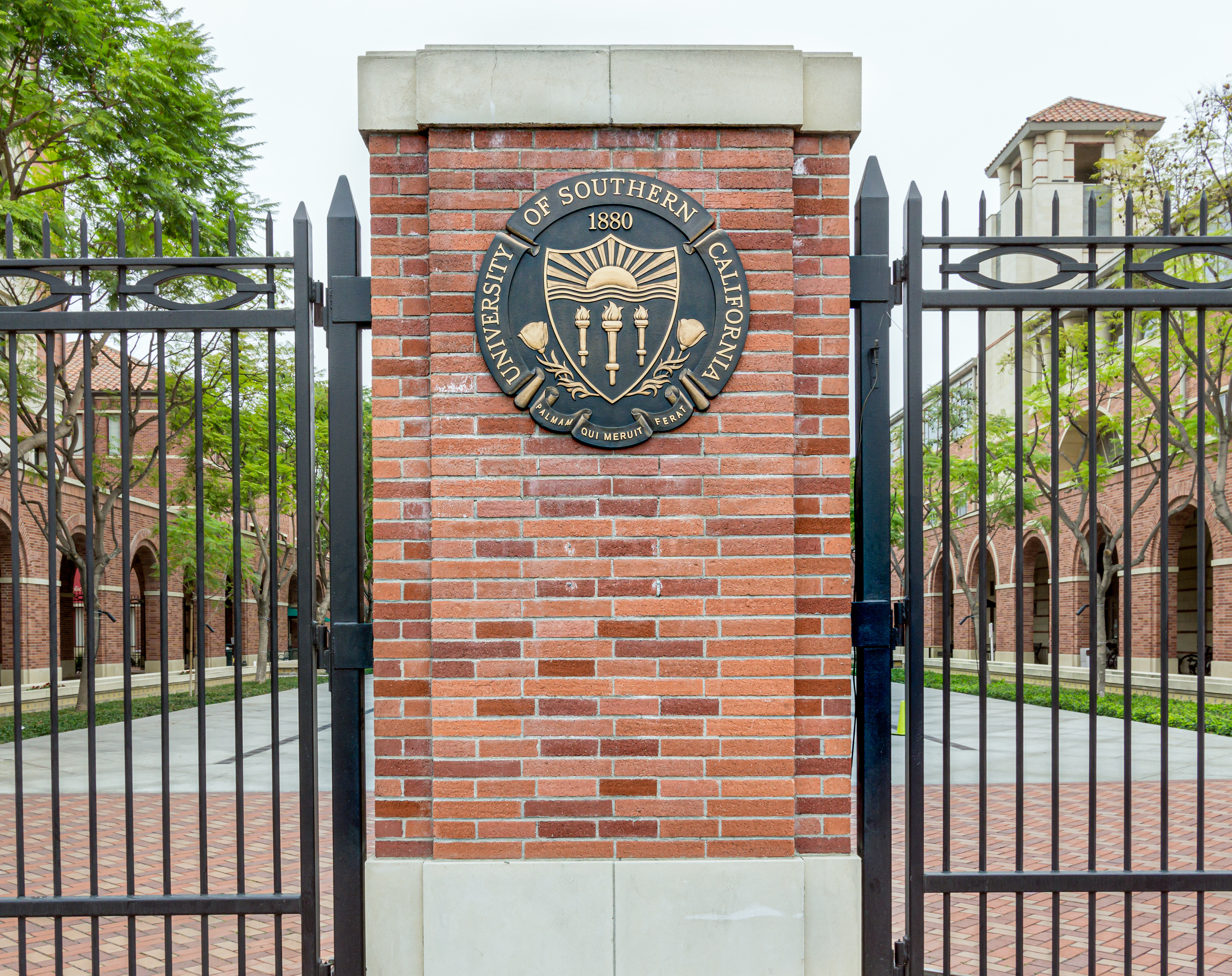
In the last week and a half, there have been two more parents sentenced with four entering plea deals. Additional charges have been brought against parents who are still fighting the charges.
One parent released
Nonprofit finance, accounting, and tax news. Other tidbits of interest to the charity community.

In the last week and a half, there have been two more parents sentenced with four entering plea deals. Additional charges have been brought against parents who are still fighting the charges.
One parent released

That makes #4 through #9 that have been sentenced.
First of the parents has reported for her free federal housing.
Other articles:
10/15/19 – NPR – Felicity Huffman Begins 14-Day Prison Term in College Admissions Scandal – She reported early for her 14 day sentence.
On 10/16/19, the Bureau of Prisons Inmate Locator website shows her with register 77806-112, located at Dublin FCI, with release date of 10/27/19. That means she would have actually reported on 10/13/19, I think. Dublin FCI is low security federal institution with an adjacent low security satellite camp. It is located in Alameda county, California. See overhead photo above.
10/15/19 – Wall Street Journal – In College-Admissions Case, Lawyers for Coaches, Others Move to Dismiss Charges – A number of parents are filing motions that the conspiracy charges are cast too wide, including parents who weren’t participating with anyone, thus the charges are more severe than they ought to be. I don’t understand the purpose of the argument, but appears to be effort to separate some of the less-involved parents from the taint of being publicly associated with the more severe cases.
Details of sentencing

On October 24 at 3:55 I will be speaking at the California Society of CPAs Accounting and Auditing Conference where industry speakers and experts will provide comprehensive updates on current issues and emerging trends. The conference runs the 24th and 25th.
My topic is valuation of donated medicine in the not-for-profit community. I have the privilege of working with a 75 minute block of time.
If you are able to attend the session you will gain an understanding of the long-term enforcement effort at the federal and state level regarding valuation of donated meds. My concern is that the governor’s veto of AB 1181 is not the end of the enforcement actions considering what has happened over the last 9 years.
Title of the session is “California GAAP” – A case study in valuation of donated medicine.
Overview of the session from the conference schedule:

On Saturday October 12, 2019, Governor Newsom vetoed California AB 1181. The bill would require charities filing financial statements with the state Registry of Charitable Trusts to value donated medicine at the fair value in the market the medicine would be distributed.
Essentially this would have required charities to use values in the international market instead of the U.S. market.
The governor announce a list of bills he signed and vetoed. You can find the list here. By my count he signed 69 and vetoed 58 on Saturday.
Veto message
The governor’s veto message can be read here. In it he said:

On Saturday October 12, 2019, Governor Newsom vetoed California Assembly Bill 1181, which would have required charities filing financial statements with the state Registry of Charitable Trusts to value donated medicine at the fair value in the end recipient market. Essentially this would have required charities filing in the state to use values in the international market instead of the U.S. market.
More discussion will follow later today.
Update: more details in followup post.
Update: The post you are reading here was the initial one published immediately after I learned the governor vetoed the bill. Later on Sunday a wrote a longer post which provided far more background. For some reason, the majority of traffic coming into this blog is going to this short post. To provide more value to those arrive in this page, I will copy the additional info on the longer post here. Hope this info is helpful.
Followup to this post, which was previously published here. Additional info is the text of the governor’s veto message, background on the veto override protocol, and my assessment whether the bill is totally, completely dead or not:

Previous discussion on 10/4/18 provided details on a settlement between Food for the Poor and the Michigan Attorney General.
Prior post provided explanation of the FFP appeal claiming 95% efficiency, the cost of 6 cents to provide a meal, and joint cost allocation of speakers who go out to raise funds.
I have obtained and read a copy of the settlement agreement with the AG. There are a few more details that are worth describing.
Penalties
The settlement agreement was effective 9/27/18. It was announced the next day.
FFP denies their appeals were misleading and denies any violation of state law. They also deny doing anything wrong. The charity does recognize
“…that modifying its solicitations would better emphasize its impact, as well as achieve greater transparency. Food For The Poor worked with the Department to modify its solicitation materials and resolve the Department’s concerns.”
FFP agreed to pay $250,000 to two charities in Michigan which feed poor people. The charity also agreed to pay the AG $50,000 as reimbursement for their litigation costs.
Issues and resolutions
Efficiency claims

Nicola White has an article at Bloombergtax.com discussing the ripple effects of AB 1181 along with some pondering on compliance issues for charities and auditors: California Drug Bill Could Hike Accounting Costs for Charities.
Full disclosure: I am quoted in the article. Scary step for me is this was my first on-the-record interview. This is only the second time I’ve been quoted in an article.
This article is not behind a paywall.
If you have been following the GIK issue, you will want to read the full article.

If you are so interested, you can read for yourself the final cease and desist orders from the California AG against MAP International, Catholic Medical Mission Board, and Food for the Poor. They may be found at:

There has been little discussion of the GIK valuation issue, especially regarding AB 1181, that I have noticed over recent weeks. Here are all the public comments I have seen. Let me know anything I missed.
Before getting to five articles, a quick minor comment on AB 1181. It was officially enrolled on 9/18/19. As of this morning (10/2/19) the exact status of the bill is that on 9/25/19 it was “Enrolled and presented to the Governor at 3:30 p.m.” according to the bill’s history.
I’m still playing catch-up on understanding the legislative process here in California. I now know that a bill must go through ‘engrossing and enrolling’ before going to the Governor for his consideration. Based on looking at some other bills, the next step after presentation to Governor is for him to sign. Then the bill is ‘chaptered’, or given an official location in the state statutes.
All that detail means the bill could not have been signed by the Governor before 9/25/19.
According to the Assembly’s legislative calendar, the governor has through 10/13/19 to either sign or veto bills.
Articles
Bloomberg Tax – 8/21/19 – Crackdown May Stop Charities From Inflating Cost of Donations
Article provides good background on the medical GIK issue. Gives good, brief background on the FTC case against four charities in 2015. Also summarizes the new FASB project.

On 9/27/19 FASB sent out a FASB Action Alert. These are sent to people who sign up for various newsletters from FASB. This one is titled Not-for-Profit Advisory Committee Meeting Recap and summarizes their meeting on September 16 & 17, 2019.
This committee is referred to as NAC. They meet twice a year.
Main topic of discussion, based on the notes, was the FASB’s project on Not-for-Profit Reporting of Gifts-in-Kind. You can keep track of the project by checking that web page.
I will quote several of the key comments in the email and summarize other comments:
NAC generally agreed that additional disclosure might be helpful to readers of financial statements.
Meaning of the following paragraph is that NAC concurs with FASB’s scope decision for this project to address presentation and disclosure and exclude any consideration of valuation:

It took a major amount of effort to oppose the cease and desist orders issued by the California Attorney General against three charities.
Various filings in the case and the one day of transcripts I’ve read indicate that each of the charities had a couple of highly experienced trial attorneys representing them.
Have you ever wondered what the tab runs for a major enforcement action? I do. When reading of massive cases against big banks I’ve been curious what the legal costs run.
Normally that information is invisible. Appropriately, there is no way to look inside private companies, massively huge public companies, and checkbooks of individual to see their legal bills.
With not-for-profit organizations, the situation is different. Charities are required to file a 990 with the IRS and send a copy to many state regulators. The majority of charities post the last several years of 990s on their website.
Part IX on page 10 of the 990 shows the detail of expenses. Line 11b discloses legal fees, line 11c shows accounting fees, and line 11g shows other professional fees not listed on one of the previous lines. Pull the 990s and you can see the disclosed information.
So, let’s take a look at the 990s for MAP International, Food for the Poor, and Catholic Medical Mission Board to see what their legal fees have been running.
For each of the charities, the legal fees for the last five years are pulled from the 990 and listed. You can visually see where the costs increased. I will assume the large increases are related to the actions of the AGs from California and other states, with the California effort being the overwhelming majority of the costs.
An average of the earliest 3 years is calculated to provide a baseline, then compared to the legal costs for 2017 and 2018. The increase over baseline is assumed to be an approximation for the costs to address the CD&O.
I have listed my calculations so you may check them. You may revise any assumptions or amounts as you wish.
MAP International
Here is the calculation of increased legal costs for MAP:

Two more parents have been sentenced in the admissions scheming. Also, the judge handling 10 plea deals outlines the rationale for sentencing.
Los Angeles Times – 9/23/19 – Prosecutors in college admissions scandal fighting for prison time for parents. The judge scheduled to sentence 10 more parents in the “Varsity Blues” admissions fiasco decided on the basis for which she will determine sentences. Prosecutors had sought to use the amount of money paid as guiding the sentence. Judge decided the actions of the parents will guide her sentencing.
Two new sentencings
9/27/19 – Stephen Semprevivo – Sentenced to 4 months in jail, 2 years supervised release, 500 hours community service, $100,000 fine, possible restitution to Georgetown. He allegedly paid $400,000 to the fake charity, which in turn allegedly paid the Georgetown tennis coach. Plan was to present the son as a competitive tennis player.

All this attention on donated medicine got me wondering just how big the sector is.
There is a small number of charities receiving big volumes of medicine donated by the pharmaceutical companies. Those charities then get all those meds distributed to charity clinics and hospitals around the world. That is incredible work which is improving the lives of millions upon millions of poor people around the world.
So, how large is that sector? Here is a bit of research.
For the charities I’m aware of, plus those that have been in the news over the last eight years or so, plus those on the record as being opposed to AB 1181, I looked up their most recent 990 on their website. For a few of the charities there wasn’t a 990 visible (or at least I couldn’t find it) so I pulled the most recent 990 from the California Registry of Charitable Trusts.
Data tabulated below is:
Amounts are converted to millions, then rounded.
Last column in the table is the dollar amount of drugs & medical supplies divided by total revenue. A higher percentage shows larger portion of income from donated meds, and thus a higher likelihood AB 1181 will have a bigger impact on the financials.
Only charities with over $20 million of donated meds and supplies are listed; charities below that level are excluded.
Summary of results
Table below includes 17 charities. Another 17 whose volume of donated meds is below $20M each are not listed.
I think there may be another dozen charities with donated meds in this sector. As I come across additional names and look up their 990s, this table will be updated.
For the not-for-profit organizations (NFP) listed, total revenue is about $8.9 billion, total donated items are about $8.1 billion, and donated drugs and supplies are about $7.5 billion.

On September 17, 2019, the chair of the California Board of Accountancy sent Governor Newsom a request to veto Assembly Bill 1181.
You may read the letter here.
The core of the letter, if I may be so bold, is the disruption AB 1181 would create for GAAP, which is set at the national level and applies to all reporting entities in the country.
Letter says changing GAAP the way this bill does would
lead to confusion for accounting professionals, regulators, donors to charitable organizations, and consumers who rely upon a consistent and predictable approach to financial reporting.
The letter requests a veto of this bill and then allowing the rulemaking process to address the issue.

On Friday 9/20/19, the California AG issued final decisions regarding the cease and desist orders against MAP International, Food for the Poor, and Catholic Medical Mission Board.
Those C&DOs have been discussed at length on this blog. See tag California AG.
If I understand the process correctly, this means the C&DO are now in effect. The fines are due soon and the clock is running on the several required actions. In addition, the various statements made by the charities regarding overhead efficiency must be changed.
I have asked the AG’s press office for copies of the actual final decisions. When I receive them, I see what new information they contain, such as appeal options.
My not-so-wild guess is the charities will follow whatever appeal options exist. (Since one of the three charities has told me they will appeal, I guess that isn’t actually a guess at all.)
Press release says fines total $1,490,175. Based on the preliminary decisions, the breakout by charity is: